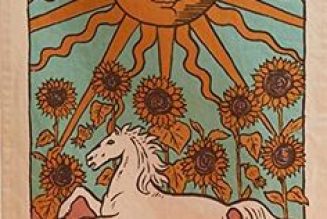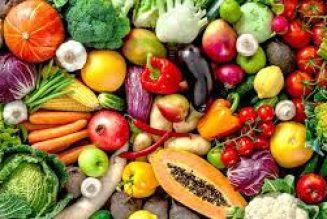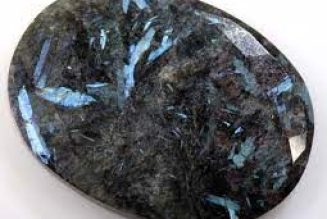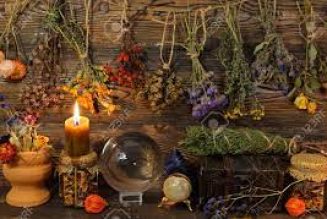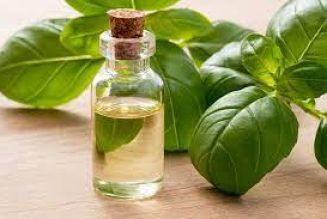Wild crafting, as we practice and promote it, is making a commitment to deepen your connection to the natural landscape and take responsibility for its regeneration.
It is learning about the plants around you, how they reproduce, where they live, and what they need to thrive.
It’s about stewardship, taking responsibility for the health and well being of the plants, and only collecting them when you recognize that conditions are right.
It is a joyful process that can unfold in beautifully rewarding and mysterious ways.
Follow the abundance.
Look for the abundance in your local landscape.
One of the best (and perhaps unexpected) options for wild crafting is weedy, invasive plants.
Edible weeds tend to be high in nutritional value, and many weeds have strong medicinal properties as well.
Dandelion, for example, offers food and medicine during many times of the year – the leaves, flowers, and roots can all be used.
Others examples are purslane, chickweed, plantain, and sorrel.
These plants can often be found in and around gardens and organic farms.
While they are thought of as “weeds”, and many farmers will gladly have you harvest them out, you may consider “tending” these patches, as well, so they offer harvests year after year.
Avoid and protect unusual, threatened and endangered plants.
No matter how appealing it may be to harvest just one unusual, rare, or threatened plant, it is your responsibility as a wildcrafter to leave it alone.
Echinacea, goldenseal, American ginseng, arnica, and osha are just a few examples of highly desired wild plants that have been over harvested and threatened due to greed and lack of education.
Do you know which are the less common, threatened or endangered plants in your bioregion? If there is any doubt in your mind about the plants’ abundance, leave the plant alone.
Helpful resources to learn more about threatened and endangered plants:
Gather in Small, Thoughtful Numbers.
If you choose to go wild crafting, be thoughtful of who you take and where you go.
We’ve heard many stories about decimated plant populations after too many people (without enough education or care) began to visit and collect plants.
Browse, Don’t Graze.
When harvesting plants, don’t concentrate on one area of the plant or the stand of plants (unless you have an ethical reason to do so, such as harvesting the leaves off a broken limb).
Browse around and spread out your harvest.
Know Where (and Where Not) to Harvest.
Wild plants grow nearly everywhere.
Look in your backyard and in your garden – if you have plants growing there, you likely have wild edible and medicinal plants as well.
Ask permission to glean weeds from a local organic farmer – that’s a great place to find a bounty of wild edibles as well.
Here in the foothills, where it is common for people to have several acres of land, ask permission to harvest some of the wild abundances from their property.
Many landowners will be happy for you to clear invasive species, like St John’s Wort, as well.
If there is a piece of open land slated for development, that’s a great opportunity to gather plants.
Consider bringing pots to transplant desirable or unusual natives that will otherwise be destroyed in those situations.
As a general rule, harvest away from trails and roadsides, and leave things looking as good or better than when you left them.
Be Okay with an Empty Basket.
You can spend hours hiking, looking around for the plant you desire, but still not find suitable conditions for harvesting.
If you are expecting to come home with some plants, your judgment for what is suitable to be harvest will surely be impaired!
If you aren’t okay with an empty basket at the end of the day, its best you don’t go at all.
Know your Plant ID.
Be absolutely sure you have positively identified the plant you plan to gather, and know about any look a likes you may confuse it with.
It’s dangerous for you (or anyone your choose to share it with) to mistake a plant’s identity and make it into food or medicine.
plant identity can be harmful to the plants, as well. For example, Scouler’s St Johns wort, native to the Sierra Nevada Foothills, looks very similar to the invasive St Johns Wort (hypericum perforatum).
If the native is mistaken for its weedy cousin, one might decimate the population in a given area by harvesting it as if it were an invasive plant.
Ask Permission, and Err on the Side of Less.
Asking permission is part of The Honorable Harvest.
Express why you want to collect the plant and what you hope to do with it. While this may feel strange, try it out, and listen.
The answer may come intuitively, or it may come pragmatically from observing the plant’s conditions.
You have to be okay with empty basket to listen truthfully!
If the answer is yes, then ask yourself how much you really need of the plant in question, and then err on the side of taking less than you think you need.
It is very common for beginning harvesters to pick more plant material than they need or can even process into food or medicine, and the waste of wild-harvested plants is an unsustainable practice that can leave you with a heavy heart.
When possible, bring your processing or preserving equipment with you into the field so you can use the plant while its fresh and avoid coming home with a plant that it too wilted or damaged to use.
Several resources recommend harvesting only 10% or less of a plant that is suitable for wild crafting.
However, 10% can often be too much, especially in an area that may be visited by multiple harvesters.
The ideal situations for wild crafting are where there is great abundance, and where you can take 1-5% of the total plant population and still get a usable amount.
Promote Abundance.
Another factor to consider when harvesting is how you can promote more of the plant in the future.
Before harvesting, learn how the desired plant reproduces.
Will the part you harvest prevent it from reproducing or growing back next season?
Has it already gone to seed?
Does it have roots or rhizomes that can be divided and replanted?
Knowing how a plant reproduces can help you harvest more responsibly and promote more abundance in the future.
Be thoughtful when you are harvesting the precursors to seeds (flowers, berries, fruit) or the seeds themselves.
If the plant is an annual it will be 100% dependent on those parts to reproduce the following year, such as chickweed and the common miner’s lettuce found in the Sierra Foothills.
If the plant is biannual or perennial, it will be dependent on seeds in the years to come (such as grindelia, yellow doc, or mullein).
While there may be situations where it is good care taking to take all the seeds away from a sensitive area, in general, you want to make sure the plant has enough resources to reproduce and thrive when you leave the area.
Many leafy perennial plants die back in the winter, and sprout new growth in the spring.
Many of these plants, especially in the mint family, will grow more vigorously when the top third of plant material is harvested.
This harvesting technique can often be made more than once per season, depending on the vitality of the plant on its environmental conditions.
Mountain penny royal, nettle, and mug wort are all examples of plants that can respond well to ‘top third’ harvesting, creating a “win-win” situation for the plant and the harvester.
If you are harvesting the root of a plant, wait until the plant has produced mature seed (often in the Fall season).
Plant the seed where you dug up the root, and disperse them around as well.
Consider taking a few home and starting plants in your own garden for future harvests.
Some plants can also grow back from the root crown – if you cut the top ¼ inch of the root, and cut back the leaves and stems within a few inches, you can put the root back in the ground, give it some water, and possibly stimulate the growth of a new root and plant.
Harvest to the Plant’s Needs.
When you are looking over an appropriate stand of plants to harvest from, think about what an individual plant or plant community might need.
Is there a branch at risk of breaking off and leaving a big fracture?
Is there a section that is creeping off in a direction where it will not do well?
Would some plants do better if the patch were thinned in a particular area? Use your observational skills to inform where and how you harvest.
Also, look around at the plant’s environment.
Is there an invasive weed looming nearby that could be removed?
Can any fallen branches or trash be removed from the plants?
Is there something else that can be done to improve its growing conditions?
Bring the Right Tools.
If you are planning to harvest, bring the right tools to do the job.
Consider pruners, a knife, hori hori, digging fork, digging stick, or whatever you need to do the job cleanly without causing excessive damage or disturbance.
Avoid damage to the plant or its environment by forcing a sloppy harvest with the wrong tools.
Bring the appropriate bags or containers to bring the harvest home in good shape, and clean up the harvest site appropriately to minimize any disturbance from harvesting.
Assess for Environmental Toxins.
Sadly, this is an important consideration in today’s world.
Avoid gathering from roadsides (100-200 feet from well used roadways), old mining sites, downwind or downstream from non-organic agriculture, parks or gardens where pesticides are used, or near any other potentially toxic exposures.
If you are gathering water plants, be sure you know where the water is coming from. Be especially cautious when collecting plants like cattails or yellow doc that are considered ‘bio accumulators’, and are more inclined to absorb both minerals and toxins from the environment.
Share your Gratitude, Share the Plant.
Finally, before you harvest, take a deep breath and connect with your excitement, wonder and appreciation for what the plant can offer you.
Take a moment to express your gratitude in words, thought, song, prayer, or whatever feels right.
Many traditions offer a spiritual gift of tobacco or corn, but you can also give a material gift by improving the plant’s living conditions.
The plants are so generous in what they share with us – food, medicine, oxygen, beauty – and we can participate in that reciprocity by giving thanks and care.
Share you your harvest with others! Its another way to celebrate and participate in the reciprocal nature of interdependence.
